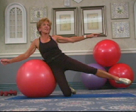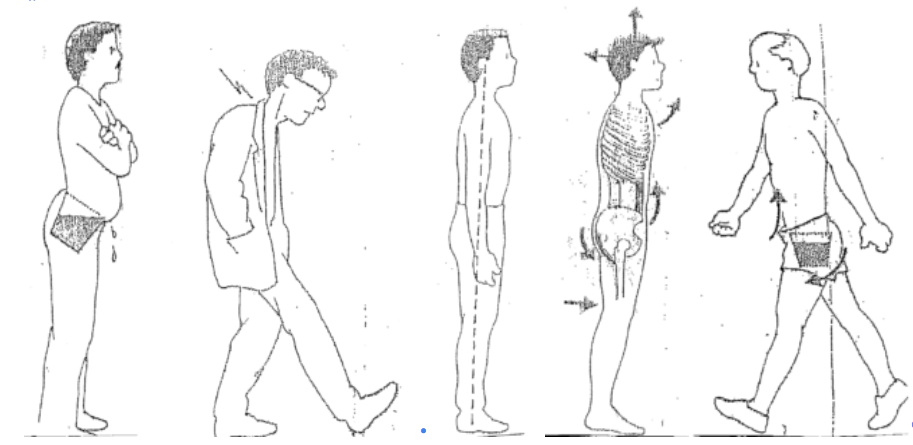Whether you are new or experienced on the golf course, a sport-specific conditioning program can give you an edge. Even if a training program does not help your score, it could keep you on the course rather than on the sidelines.
A good golf conditioning program emphasizes strength,flexibility and endurance. The conditioning goal for golfers is a strong and flexible musculoskeletal system that maximizes swinging power and minimizes injury risk. The golf swing is one of the most complex and unnatural actions in sports, so it is difficult to design sport-specific exercises,however, research has found that improved muscle strength and joint flexibility can increase swinging speed and enhance driving power.
Avoid Common Injuries. Golfers have a high injury rate in the shoulders and back, as well as the hips, elbows and wrists. You can reduce your injury potential by paying close attention to those areas in your conditioning program and by practicing proper swing mechanics with a golf professional.
Watch your Shoulder Rotators. You should do rotator cuff stretching on the golf course before you start playing since the injury sensitive rotator cuff musculature musculature does a considerable amount of work during the golf swing. An ongoing strengthening program using tubing and weights is a must for reducing the risk of injury.
Keep Up your Cardiovascular Work. Although cardiovascular endurance plays a minor role in golf performance, it plays a major role in your health. Strive for at least three 30 to 60 minute sessions at 70% to 85% of you age adjusted maximum heart rate. Consult with your physician or healthcare professional for guidelines for a sport-specific program .
Get Strong/ Train Progressively /Select the Proper Exercises. Two sessions a week, each session should include a minimum of 20 minutes of strength training and 10 minutes of stretching. Increasing the reps, hold time, the intensity and rest time will enhance the effectiveness of your program.
Core Strengthening is a Must. The abdominals, lower back, hips and buttocks comprise the “core/powerhouse”. The powerhouse needs to be strong to endure the stress and strain we give our body when playing golf.
Never Underestimate the Value of Stretching. Stretches for the hamstrings, low back, upper back,hips and shoulders are particularly relevant to golfers. Slow longer sustained stretches 1-2 times, holding 30 to 45 seconds is most beneficial rather than short fast stretching 6-8 times.
Be Careful with Weighted Swings. Performing with a weighted golf club or trying to duplicate the golf swing with resistance equipment can be more harmful than helpful. The best practice drill for improving this highly skilled movement is done at the driving range under the direction of a qualified golf professional.
Select Professional Carefully for advice. Seek out qualified healthcare professional with experience for sport-specific advice on conditioning as well as qualified golf professional for advice on proper golf techniques.
The golf conditioning exercises are divided into three levels.
LEVEL l Lengthening stretching motion
LEVEL 2 Strengthening especially the core muscles
LEVEL 3 Sports specific exercises
LEVEL l . . Stretching is held 30 seconds , usually 2 to 3 reps. You should not experience increased pain with stretching exercises. Back off and stretch to the edge. Also, you should not get cramping when stretching.
Warm up muscles by biking.walking 10 -15 minutes before stretching
LEVEL 2. Strengthening exercises should not increase pain.
Strengthening should be completed slowly with a 3 to 5 count using 10 to 15 reps. criterion.
maintaining the same resistance complete 10 reps for 3 to 5 sessions, maintain same resistance 12 reps for 3 to 5 sessions,
maintain same resistance 15 reps for 3 to 5 sessions.
Increase resistance 10 to 20 %, if tubing advance to next level. repeat the 10 to 15 reps criterion
LEVEL 3 Sports specific exercises relate to the playing motions and movements i golf
Practice these exercises prior to playing or practicing golf. apply these exercises when practicing at the driving range.
DO Stretching exercises and strengthening exercises on alternate days
A STRONG CORE =BETTER HEALTH!!!!
Control the Core!!! The keystone to a better lifestyle.
The concept of lengthening and strengthening muscles was initiated by Joseph Pilates, who died in 1967. He based this technique on extremely sound principles. He devised his unique conditioning program after looking at various forms of yoga,ballet and martial arts. The method lengthens muscles while strengthening them, stabilizing the lumbar spine and pelvis along with controlled breathing, facilitates deep abdominal contraction. All energy for the Pilates exercises flows outward to the extremities.
The core muscles are a large group of muscles in our center, encompassing the abdomen, lower back, hips and buttocks. These muscles stabilize the spine,pelvis and shoulders and provide a solid foundation for movement in the extremities. These muscles help control movements,transfer energy, shift body weight and move in any direction.
A strong core distributes the stresses of weight bearing and protects the back. .
Reduce Back Pain…Stabilize the Core Muscles
Abdominals get all the credit for protecting the back and being the foundation of strength, but they are only a small part of what makes up the core. In fact, it is weak and unbalanced core muscles that are linked to low back pain. Weak core muscles result in a loss of the appropriate lumbar curve and a swayback posture. Stronger, balanced core muscles help maintain appropriate posture and reduce strain on the spine.
Core Muscles Improve Athletic Performance
Because the muscles of the trunk and torso stabilize the spine from the pelvis to the neck and shoulders, they allow the transfer of powerful movements of the arms and legs. All powerful movement originates from the center of the body out, not from the limbs alone. Before any powerful rapid muscle contractions can occur in the limbs, the spine must be solid and stable and the more stable the core, the more powerful the extremities can connect.
Training the muscles of the core also corrects postural imbalances that can lead to injuries. The biggest benefit of core training is to develop functional fitness – that is fitness that is essential to both daily living and regular activities.To facilitate an active core contraction:
To initiate core stabilization:
- Inhale to prepare
- Stand up straight keep the head on the shoulders, not the chest.
- Blow out forcefully, like blowing out a candle at the same time pull the pubic bone to the ribs and drive the belly button inward towards the spine, pause and breath in slowly.
- Repeat every 5 seconds for 6 reps
- Visualize your pelvis as a bucket of water, pull up on the bucket and keep it level
- Repeat through out the day with daily activities including recreational.
- As the core muscles become stronger less effort is required to “keep your bucket level”









